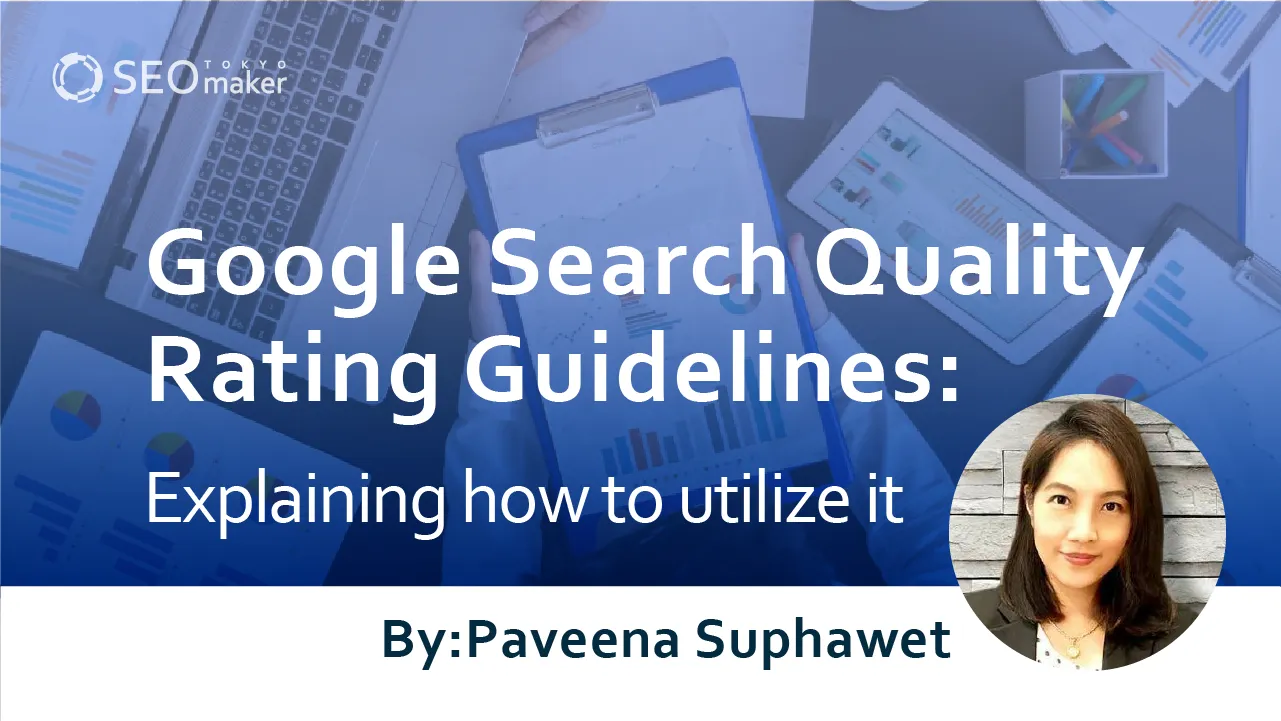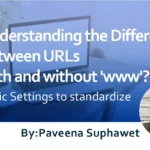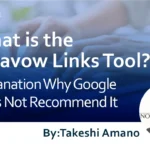Google Search Quality Rating Guidelines: Explaining how to utilize it
contents

The update to the Google Search Quality Evaluator Guidelines was reported on November 16, 2023. The previous update occurred on December 15, 2022, introducing significant changes with the addition of the EAT concept. This time, the main changes include adding new case studies, removing outdated and redundant examples, and expanding evaluation guidance. There are no major changes reported.
The Google Search Quality Rating Guidelines were updated on November 16, 2023, simplifying the guidelines. Specifically, the update simplified the definition of ‘Page Quality,’ added guidance for various types of web pages, including new content formats like short videos, and expanded evaluation guidance for forums and discussion pages. None of these updates significantly alter or fundamentally change the guidelines.
Quote: Updates to Search Quality Rater Guidelines (Google Search Central)
The guidelines are intended for Google’s search quality raters to assess the value of search engines and do not have a direct relationship with SEO. However, considering the frequent core algorithm updates in 2023 and the Helpful Content System, it becomes clear that they are relevant to Google’s thinking and the overarching SEO strategies from 2024 onward.
What Are the Google Search Quality Rating Guidelines?
The Google Search Quality Rating Guidelines are guidelines provided by Google for search engine quality raters. Google conducts hundreds of search engines every year, and these guidelines are distributed to quality raters in advance to confirm whether these improvements are truly improving the search experience.
Although the guidelines are lengthy, spanning over 170 pages in English, they provide valuable insights into Google’s ideals and perspectives, making them an excellent resource for understanding what Google’s search engine is all about.
Originally, these guidelines were confidential information for Google internal use and select stakeholders. However, they have been leaked several times in the past and are now publicly available, making them recommended reading for anyone proficient in English.
>>General Guidelines
Who Are Search Quality Raters?
Search quality raters are individuals chosen by Google to evaluate whether search engines are leading to beneficial information for users. Generally, the identities of search quality raters are not disclosed, but in 2021, there were instances of individuals publicly revealing themselves as search quality raters, drawing attention to future developments in this area.
Improvement Methods for Google Search Engine
Before utilizing the Search Quality Rating Guidelines, it’s essential to understand how Google enhances the accuracy of its search engine.
While not entirely disclosed, Google generally improves its search engine through the following steps
- Releasing the search engine to a test environment
- Search quality raters testing the search engine in the test environment
- Determining if the search results are appropriate for production
- If the results meet certain criteria, they are implemented; otherwise, they are sent back for further review
As you can see, human eyes verify the search engine results. Therefore, various perspectives are considered to ensure that the results generated by the algorithm are genuinely appropriate and to avoid any issues.
However, on the flip side, this also means that if the search results satisfy the raters, even if they contain incorrect information, they may still be reflected in the search engine.
Using the Guidelines for SEO
Since the Search Quality Rating Guidelines are used by raters for visual confirmation, reading the guidelines won’t provide specific improvement techniques like those found in media from SEO companies. Therefore, the guidelines are not directly related to SEO.
However, by implementing SEO strategies that raters would consider appropriate for their evaluation, it’s conceivable that the search rankings could improve in the future if they currently aren’t ranking high enough.
YMYL as an Authority
The 2022 guideline update introduced the concept of EEAT, which sparked significant discussion.
EEAT stands for Experience, Expertise, Authoritativeness, and Trustworthiness, adding Experience to the original EAT framework.
Before that, the concept of YMYL (Your Money or Your Life) was added, also having a profound impact on the industry. YMYL refers to topics such as life, finances, and health, which have a significant impact on people’s lives. For YMYL topics, it’s advisable to provide information from an expert perspective as a subject matter expert.
This concept is connected to EEAT, where trustworthy and safe information from reputable experts is considered to have a high EEAT. However, when sharing personal experiences as information, solely relying on expert opinions or authority may not always meet user needs. Therefore, even information from individuals can be valuable.
When reading the guidelines, it’s crucial to first fully understand YMYL and EEAT and then consider the direction of your company’s content.
The Significance of EEAT
EEAT stands for Experience, Expertise, Authoritativeness, and Trustworthiness. Google prioritizes a user-first approach, aiming to display high-quality pages and sites in search results as much as possible.
offline, this means that low-quality pages won’t be rated, and their quality can be evaluated based on whether they meet these four criteria.
In essence, it’s about indicators like whether the content’s author has relevant experience, whether it’s authored by someone with industry expertise, whether it’s produced by an authoritative figure on a specific topic, or if it’s a sufficiently trustworthy site.
While creating high-quality content often involves considering user search intent and competitor articles, indirectly, EEAT deeply influences SEO strategies. Thus, it’s essential to thoroughly consider who is delivering what information when disseminating content.
In other words, even if your content fulfills user needs sufficiently and appears superior to competitors’, it may not be evaluated by Google if the content creator or site isn’t deemed reputable enough.
While content SEO is currently emphasized, it’s crucial to step back and assess whether your entire site is trustworthy when viewed holistically.
Creators’ Positive and Negative Reputations
Google doesn’t directly reflect content creators’ reputations in search results, but the guidelines mention positive and negative reputations for content creators or sites. Content from creators with negative reputations would receive lower ratings, whereas content from those with positive reputations should receive higher ratings .
This applies not only to authors but also to the overall site evaluation. Google seems to favor evaluating articles from sites or authors with high societal esteem.
However, considering that the general public often lacks reputation information, it’s presumed that influential writers, journalists, bloggers, or professionals like doctors, lawyers, and financial planners are referenced regarding reputation.
For instance, search results about cancer treatment would naturally prioritize information from medical professionals, especially those with industry authority. Cancer treatment falls under the criteria of E-E-A-T, where expertise, authoritativeness, and trustworthiness are paramount, though depending on search queries and user needs, experience may also be prioritized.
Understanding that high-quality content creation involves more than just the article’s structure, alignment with user search intent, and providing more in-depth information than competitors is crucial. Factors like YMYL, E-E-A-T, and reputation are also considered.
Evaluation of Content Quality in the Guidelines
The guidelines explain page quality in five stages
- Lowest Quality Pages (Pages 29-50)
- Low-Quality Pages (Pages 50-57)
- Medium-Quality Pages (Pages 57-60)
- High-Quality Pages (Pages 60-66)
- Highest Quality Pages (Pages 66-74)
The November 16, 2023, version of the Search Quality Rating Guidelines spans 168 pages, all in English, making it a labor-intensive read. While it provides detailed explanations with examples, even media operators don’t need to read it cover to cover.
Among the five quality stages, a significant portion of the guidelines is dedicated to the lowest-quality pages, comprising about half of the section on content quality. While high-quality content is essential for ranking well in SEO, Google seems to emphasize avoiding the lowest quality rather than focusing solely on the highest quality.
Especially for large sites, outdated low-quality articles may linger, and removing or rewriting such content can enhance the overall site evaluation, making it an effective SEO strategy. This indicates that while striving for high quality, avoiding low quality is equally crucial.
Lowest Quality Pages
“Lowest quality pages are untrustworthy, deceptive, harmful to people or society, or have other highly undesirable characteristics. The considerations for Lowest quality include quality of the MC, reputation, E-E-A-T, etc., but there are special checks you will need to complete first.”
Quoted from: General Guidelines (November 16, 2023)
The beginning of the guidelines for Lowest Quality Pages states, ‘Lowest quality pages are untrustworthy, deceptive, harmful to people or society, or have other highly undesirable characteristics. The considerations for Lowest quality include quality of the MC, reputation, E-E-A-T, etc., but there are special checks you will need to complete first. ‘
Specifically, the following are considered lowest quality pages.
Content Quality
- Pages that are vandalized or spammy
- Pages with no meaningful content
- Pages that are copied or automatically generated
- Pages lacking effort, originality, talent, or expertise, and fail to achieve their purpose
Page Titles: Titles that are extremely misleading or exaggerated
Site Advertisements: Interstitial ads or download links intentionally hindering the viewing of main content or offering no value to visitors
Provided Information: In pages requiring YMYL topics or reliability, incomplete information about the content creator
Site Reputation: Having extremely negative reputation
E-E-A-T: Being extremely untrustworthy. Lack of experience, expertise, authoritativeness, or trustworthiness hindering the achievement of the page’s purpose
Low Quality Pages
“Low quality pages do not achieve their purpose well because they are lacking in an important dimension or have a problematic aspect. Low quality pages do not meet the standards for Lowest but may have similar though milder undesirable characteristics. “
Quoted from: General Guidelines (November 16, 2023)
The guidelines state, ‘Low quality pages do not achieve their purpose well because they are lacking in an important dimension or have a problematic aspect. Low quality pages do not meet the standards for Lowest but may have similar though milder undesirable characteristics.’
Specifically, the following are considered low quality pages.
Content Quality: Created without the required effort, originality, talent, or expertise
Titles that are misleading or exaggerated
Site Advertisements: Ads obstructing the viewing of main content
Provided Information: Inadequate information about the content creator
Site Reputation: Having negative reputation
E-E-A-T: Insufficient for the purpose of the page
Medium Quality Pages
“Medium pages have a beneficial purpose and achieve their purpose. There is nothing wrong with Medium quality pages. Expect to encounter many Medium quality pages in PQ rating tasks. “
Quoted from: General Guidelines (November 16, 2023)
According to the guidelines, ‘Medium quality pages have a beneficial purpose and can achieve their purpose. There’s nothing wrong. When evaluating page quality, expect to encounter many Medium quality pages.’
While the term ‘high quality’ seems to be a common theme when creating SEO content, realistically, achieving high quality for all content is challenging. The guidelines indicate a preference for Medium quality content, which falls within the middle three out of five levels.
Content Quality: Created with sufficient effort, originality, talent, and skill to achieve the page’s objectives.
Site Reputation: Neither particularly positive nor negative. There are no concerning reputational issues, but it’s not exceptionally high either.
E-A-T: Adequate level concerning the page’s objectives.
In essence, Medium quality pages have no significant flaws but also lack standout features, or they may possess some good aspects but also show signs of low quality.
Depending on the topic, it’s often challenging to create entirely original content, and differentiation from competitors can be difficult. In such cases, content may prioritize clarity over high quality or present a different perspective. Although classified as Medium quality, these pages are not necessarily bad.
High Quality Pages
“High quality pages serve a beneficial purpose and achieve that purpose well. High quality pages exist for almost any beneficial purpose you can imagine, from providing information to selling products to making people laugh to artistic expression. “
Quoted from: General Guidelines (November 16, 2023)
The guidelines state, ‘High quality pages exist for almost any beneficial purpose you can imagine, from providing information to selling products to making people laugh to artistic expression.
Content Quality: Created with a high level of effort, originality, talent, and expertise to achieve the objectives
Site Reputation: Positive reputation regarding topics and creators
E-E-A-T: High level of E-E-A-T for the purpose
High-quality pages are those where concerns from average-quality pages are addressed and the content is elevated to a sufficiently high level. While aiming for high uniqueness can be challenging, the guidelines include numerous examples and valuable insights to reference.
At this level, outsourcing content creation often becomes challenging, requiring businesses to assess how much effort and cost they’re willing to invest in-house.
Highest Quality Pages
“Highest quality pages serve a beneficial purpose and achieve that purpose very well. The distinction between High and Highest is based on the quality of MC, the reputation of the website and content creator, and/or E-E-A-T. “
Quoted from: General Guidelines (November 16, 2023)
The guidelines state that the difference between high-quality and highest quality pages lies in the quality of the main content, the reputation of the website and content creator, and the E-E-A-T.
Content Quality: Content created with a very high level of effort, originality, talent, and skill, capable of achieving its purpose very effectively.
Site Reputation: The website has a highly positive reputation.
E-E-A-T (Expertise, Authoritativeness, Trustworthiness): There is a very high level of E-E-A-T for achieving the purpose.
The criteria for high-quality pages and highest quality pages are almost identical, but they demand an unparalleled level of excellence across all standards.
At this level, it becomes crucial not only to plan, structure, and write content but also to ensure the website and the author are well-recognized and highly regarded on the web. Therefore, investing sufficient cost and effort in ongoing external outreach becomes essential.”
Summary
Observing the changes in Google’s Search Quality Evaluator Guidelines and the trends in the 2023 Core Algorithm Updates, it’s evident that content has become increasingly crucial. additionally, it’s evident from the guidelines that the evaluation extends not only to specific pages but also to the entire site and the authors of the content. Particularly within the Helpful Content System, where user satisfaction is highly valued and the system aims to differentiate between content that meets expectations and that which does not, Google has shifted its assessment of content to a higher standard since 2022 Since around 2020, YMYL (Your Money or Your Life) has been emphasized, followed by a deeper focus on evaluating content beyond mere writing, including EAT (Expertise, Authoritativeness, Trustworthiness) and EEAT (Expertise, Authoritativeness, Trustworthiness of the creator) This trend is expected to continue moving in the foreseeable future, highlighting not just writing but also how active site owners and operators are beyond their websites as a key focus forward.










![What is a Description? Explaining the Meaning, Writing Style, and Changing Word Count – [2023 Edition]](https://www.switchitmaker2.com/en/wp-content/uploads/2024/09/what-is-description.webp)










